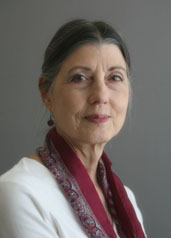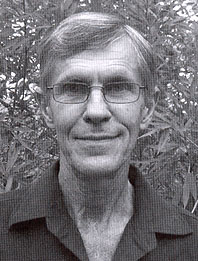The Light of the Russian Soul: A Personal Memoir of Early Russian Theosophy
By Elena F. Pisareva
Originally printed in the SEPTEMBER-OCTOBER 2008 issue of Quest magazine.
Citation: Pisareva, Elena F. "The Light of the Russian Soul: A Personal Memoir of Early Russian Theosophy." Quest 96.5 (SEPTEMBER-OCTOBER 2008):171-174.
The following extracts are taken from a new translation by George M. Young of a never before published account of Theosophy in Russia before and until the Russian Revolution. The author, Elena Pisareva, focuses especially on the early leader of Russian Theosophists, Anna Kamensky, some of whose activities these extracts describe.
NINA GERNET DESERVES TO BE CONSIDERED the first pioneer of Theosophy in Russia. She traveled abroad annually, attended most European Theosophical congresses, became acquainted with Annie Besant, and at great personal risk smuggled forbidden Theosophical literature into Russia. The main repository for this literature was in St. Petersburg, in the residence of a childhood friend, Anna Kamensky, who had attended secondary school with Nina in Geneva.
Anna Kamensky was born on August 25, 1867, near St. Petersburg. Until the age of fifteen, she enjoyed a very happy childhood, first in Germany and then in Geneva, where she finished her secondary education. Her dream was to attend a university, but at that time her mother's financial situation had become desperate, so they were forced to return to their homeland. After Anna and Nina had finished school, both families, the Kamenskys and Gernets, returned to Russia.
Anna was deeply involved in the Enlightenment movement, begun in Russia on the initiative of progressive groups with the intention of liberally informing the Russian people. The initial stimulus for the rise of Theosophy in Russia was an unexpected event in Anna's life. As mentioned above, Nina Gernet had left a collection of Theosophical literature at Anna Kamensky's residence and repeatedly urged her to become acquainted with these works, insisting, "This is just right for you."
But Anna had to spend all day giving lessons in French in order to support her family: a mother, an aunt, and two younger sisters. She devoted all her free time between lessons to her social enlightenment activities. Owing to this unending task, she was not able to follow her friend's wishes until an unfortunate event resulted in involuntary leisure.
In 1899, while hurrying to a lesson, Anna Kamensky slipped on the street, fell, and broke a leg. This accident forced her to stay in bed for an entire month. She remembered the collection of Theosophical literature and asked for whichever book was at the top of the trunk holding Nina Gernet's Theosophical volumes. That book turned out to be Annie Besant's In the Outer Court. From the first page, Anna was so captivated that she read the whole book straight through during the night. When she had finished, it seemed to her that "before her a veil had been torn and she beheld the entire path of humanity and the entire meaning of suffering."
After reading Annie Besant's book In the Outer Court, Anna immediately became a member of the English Section of the Theosophical Society, and in 1902 set off for London, where she met Annie Besant, who had come there to preside at the convention. Shortly afterwards, Anna wrote Besant a letter in which she described her soul's current state of development and her wish to pursue enlightenment through Theosophical work. In reply to this letter, Annie Besant invited her for a visit and after a prolonged conversation declared that she would accept Anna as her personal pupil.
Tolstoy and Theosophy
Leo Tolstoy, although not directly connected with the history of the Theosophical Society in Russia, had a sympathetic attitude toward Theosophy. He took a course in Theosophy and read our Theosophical Herald, thanks to being constantly in touch with his daughter-in-law Sofia Tolstoy, who was one of the first to join the Russian Theosophical Society and was an active member. She made it her usual practice to go to Yasnaya Polyana, where Tolstoy lived, with the final proofs of articles for the Theosophical Herald, which he read carefully. On one of them were such notations in his hand as "true," "good," and "very good." From these notations it was clear that he accepted the entire ethical side of Theosophical teaching and shared it.
In the summer of 1908 Anna Kamensky and I visited Tolstoy. During the whole afternoon we were there, Tolstoy spent it in conversation with us, paying careful attention to everything that concerned Theosophy. I gave him an account of my first encounter with Theosophy in the park of the Rikli sanatorium, where all the patients spent the time from morning to dinner in direct oneness with nature, barefoot, in just their smocks. I noticed six individuals who were all behaving with such good will and attentiveness to others that I decided they all surely belonged to the same spiritual society. When I made their acquaintance, I learned to my great surprise that they were all from different countries and had first met here at the Rikli sanatorium. Noticing my astonishment, one of them, an English woman replied smiling: "This similarity is natural, we are all members of the Theosophical Society." This imprint of nobility on the human soul was what drew me toward Theosophy.
After listening to my story, Tolstoy repeated several times with great animation, "That's how I understand it! That's how it really is! Not just words, it's a person that causes change, that's the main thing!"
Afterwards, Sofia Tolstoy told me that, when we had left and over the next several days, her father-in-law kept repeating my story to new visitors, and each time he would conclude, "That's how it really is! That's the main thing!"
We all loved him. He awakened our conscience. He recognized karma and reincarnation, but he would declare, "None of that is important, only one thing matters: love one another, and all the rest will follow."
Search and Seizure
In 1920, when the activities of all societies were curtailed, including those of the Theosophical Society, one night the government conducted a search of the Theosophical Center. The investigator had an order for the arrest of Anna Kamensky, but at the time she happened to be out of the city, at the Lesny sanatorium, where her mother had just been buried and she herself lay ill. During the search, the editorial secretary, Tsetselia Gelmboldt, demonstrated remarkable self-control and presence of mind, thanks to which she managed to save Annie Besant's letters to Anna. The portraits of the Masters also, by some miracle, remained and were not seized. The search did not uncover anything dangerous; nevertheless the agents of the Secret Police took away many papers, manuscripts, and letters that were stored there.
On the next day after the search of the headquarters of the Theosophical Society, a soldier appeared with a warrant to arrest Anna Kamensky and take her to the Secret Police. Tsetselia began to explain to the soldier that Anna was out of the city, lying ill, and could not appear. The soldier turned out to be goodhearted and advised her to go herself and personally explain the reason for the absence of the chairwoman.
Tsetselia went immediately to the Secret Police but had not even finished her explanations when the official started to shout at her and threaten that, if they were to go into hiding, he would send both of them to exile in Tmutarakan! To this, Tsetselia replied that they would not think of going into hiding, that Anna was just lying sick at Lesny. "I'll give you my word that in a week, when she is better, she herself will come to you." In answer to this, the policeman began to shout that such promises would not work on him, that Anna Kamensky had to appear at once, otherwise "both of you are going to Tmutarakan!" To this Tsetselia calmly answered, "Well, so what! Even in Tmutarakan it may be all right if a person does not do wrong. A person carries light inside and shines it everywhere."
The policeman screwed up his eyes at her, and she continued, "We are not thinking of going into hiding. You can rely on our promise. If you were acquainted with our teachings, you would know that we cannot lie. And why are you shouting so? It's hard for me to listen, and you are wasting your energy; in order to understand one another, it's much better to speak in a normal voice, without straining." After these words the policeman started combing the back of his head and said in an entirely different tone of voice, "It's true, this is just a habit we have. You can go, just so Anna Kamensky shows up here in a week!" When Tsetselia was walking away, he got up and stopped her: "Wait! I'll give you a pass!" Later she found out that without this piece of paper they would not have let her out.
After a week passed, Anna had just managed to return from the sanatorium when she was sent a notice to appear at the Secret Police in person. She at once set off, and her devoted friend Tsetselia decided to go with her as well. This was very risky, since those who entered the doors of the Secret Police for the most part never came out again.
They were led into the office of the investigator, and then separated. Tsetselia was taken into an adjacent room, and each of them was given a printed questionnaire to which detailed answers were required. One of the questions was "How do you regard the commune?" They were both interrogated; although they were in different rooms, they both answered in the same way, word for word, saying that for Theosophists a spiritual community was one of the ideals of the future.
The investigator tried to trap them and to upset them with shouts and crude insults. He called them "enemies of the people," accusing them of underground intrigues, and threatened them with prison and exile if they did not sincerely confess all their crimes. In passing he questioned them about friends and colleagues, trying to obtain their names and addresses. When they did not answer these questions, the investigator grew more abusive.
He began to accuse them of sabotage and parasitism, to which they responded that they wanted to work but they were persecuted everywhere and prevented in every way possible from laboring for the benefit of the people. On hearing this, the investigator stunned them. He proposed that Anna become head of a New Spiritual Academy, where she would be free to propagate Theosophy, but only on one condition: she must convince people that there was no God and that every religion was a false doctrine.
Tsetsilia, in her turn, was offered the post of nothing more or less than the Commissar of Public Enlightenment. When she declined, the investigator gave her a penetrating look and asked why she had refused. "Because," she replied, "I do not consider myself qualified for such an important and responsible job. I do not have enough knowledge for it." "Nonsense!" shouted the investigator. "We pull a peasant away from his plow and put him in a responsible post, and he does not refuse!" "Because he does not realize," declared Tsetselia, "that he does not have the knowledge and does not have a sense of responsibility, but I have enough of both to understand how much one needs to know in order to be a good Commissar of Public Enlightenment."
Anna also refused the honor offered, and they continued to interrogate her for five more hours. Finally Anna changed her tone and sharply and energetically expressed her exasperation that innocent citizens had to undergo such an inquisition. After that the investigator changed his tone, stopped shouting, and let them go.
Escape from Soviet Russia
Anna and Tsetselia managed to flee at the beginning of June 1921 through the forests and swamps of Finland.
At that time in St. Petersburg, several secret organizations conducted refugees across the border. Anna and Tsetselia were able to make contact with one of them. The plan of escape was as follows. One of the Finnish milkmaids who brought milk into St. Petersburg from a village by the border volunteered to ride with Anna and Tsetsilia as far as the next railway station and then lead them through the forest to her house in the village. There they would rest, and at dawn two Finnish smugglers were supposed to come for them and lead them over a nearby river that separated Russia and Finland.
On the day set for departure, Anna and Tsetsilia dressed in proletarian clothes and covered their heads with kerchiefs like those worn by peasant women. Shouldering knapsacks that contained all necessary toilet articles, one change of underwear, the Gospels, and the Bhagavad Gita, they set off on their perilous journey.
All went well as the fugitives traveled by rail and then walked through the forest, following the milkmaid and pretending that she was walking by herself and that they did not know her. But just when they were getting close to her village, the milkmaid suddenly noticed on a tree some kind of sign indicating that a Red Army patrol was in the vicinity.
She left the fugitives in the forest and ran ahead by herself into the village. This happened just as it was starting to get dark, and soon night had completely fallen. Anna and Tsetsilia started to feel creepy, waiting there in a strange forest. When the milkmaid returned, they learned from her that Red Army troops had indeed entered the village, and to go there would be dangerous. They would need to take a new route through forests and swamps and avoid the road for ten miles northward. The milkmaid led them down a ravine, where the smugglers, two healthy young Finns, were waiting for them; then she went off alone to the village.
All night until dawn, the refugees walked through the woods and swamps but not once did they experience fear or doubt. The warm June night, the starry sky, spreading out over them, and the forest thickets all seemed like an enchanted kingdom. They felt that an angel was guiding them and that, without a doubt, everything would turn out well. Both of them experienced a profound sense of peace.
And indeed everything did go well right to the end, and their peaceful mood was broken on only two occasions. Just before they left the forest, the smugglers took out revolvers and demanded immediate payment, excusing their demand by pointing out the possibility of meeting up with the patrol that was threatening them all with death. They wanted to be paid, no matter what. But Anna, considering the situation, calmly and firmly reminded them that by their mutual agreement payment was to be made after crossing the border, and not before; then the guides relented.
They experienced a second alarming moment when they began to go down toward the river. No one could be seen, there was complete silence, but dawn had already started to break. Going down to the very edge of the river and considering themselves safe, the smugglers began to take off their shoes to ford the river barefoot. At that moment, Tsetselia grew frightened, thinking it would take too long to get her shoes off, and she worried that Red Army troops might suddenly appear at the last second, So she plunged into the river, not waiting for the smugglers to take off their shoes or show her where the ford was. Anna followed after her, and both came up onto the far shore completely soaked, while the guides crossed the dry way.
When they stepped up onto Finnish soil, Anna crossed herself and said, "Thank God! We are on free land!" And Tsetselia stretched out her arms toward the shore they had left and in tears declared, "All our brothers and sisters are still left there."
George M. Young, Ph.D., is a Slavicist who has taught Russian and Comparative Literature at Grinnell and Dartmouth Colleges, although for many years he ran a fine arts and auction business. He is the author of many articles and books on Russian literature and religious philosophy. Young currently teaches English literature at the University of New England. These excerpts are from his translation of Elena Pisareva's journal, The Light of the Russian Soul: A Personal Memoir of Early Russian Theosophy (Quest Books, 2008).



 I WAS A COCKY CATHOLIC KID WHEN I ARRIVED in Japan. Having completed my degree in religious studies and philosophy at an American university, I thought I could grasp anything the Japanese might throw at me. I could see the infinite Buddha-nature and hear the sound of one hand clapping.
I WAS A COCKY CATHOLIC KID WHEN I ARRIVED in Japan. Having completed my degree in religious studies and philosophy at an American university, I thought I could grasp anything the Japanese might throw at me. I could see the infinite Buddha-nature and hear the sound of one hand clapping.